This is my second visit to Wet Jacket – a fairly new place that’s breathed life into the historic Bendemeer Woolshed on the main road out of Queenstown, and which forms part of a triangle of places out that way alongside the casual café/wine cellar style of Akarua and the finer dining/winery experience of Amisfield. Wet Jacket also has a relaxed, country pub vibe to it, with a food truck usually on site, and plenty of room for relaxing under an umbrella on the lawn. This summer I caught up with founder Greg Hay to talk about his adventures in wine, and how the new venture is going.
Greg Hay: Chard Farm was the starting point back in 1987, with my brother. And did that for 10 years back when the whole grape growing and winemaking was in its absolute infancy. Definitely in the pioneering phase. Did that for about ten yaers and then in 1998 started Peregrine and did that for 17 years, and then just sold up my shareholding in that about four years ago. This is now in its fourth summer here. Much smaller and a bit more personable. Keep volumes low and actually sell the majority of of it off the site here.
I don’t actually have my own vineyards here – that’s the model I’ve gone towards. They’re either vineyards that I’ve planted some time in the last thirty years, or I’ve worked with the owners in the past. And because I’m trying to do a representation of a Central Otago style of wine. So sometimes the grapes will come off one vineyard, and sometimes off three or four to try and make the style. I’m not too fixated on having a vineyard and making an expression of that.
Some do – the Riesling comes off one single block. And the Sauvignon Blanc comes off one block in Bannockburn. The Gewurztraminer, for example, comes off one in Alexandra and one in Gibbston. The Pinot Gris, off two blocks, is Lowburn and one in Alex, so I’m all over the region. And the Pinot Noir comes off three or four. If it’s looking like a really hot year I can change it up and get some fruit off a cooler vineyard site. Rather than going “here goes the vintage, let’s see what came out”. There’s a bit more blending work which is half the fun of it.
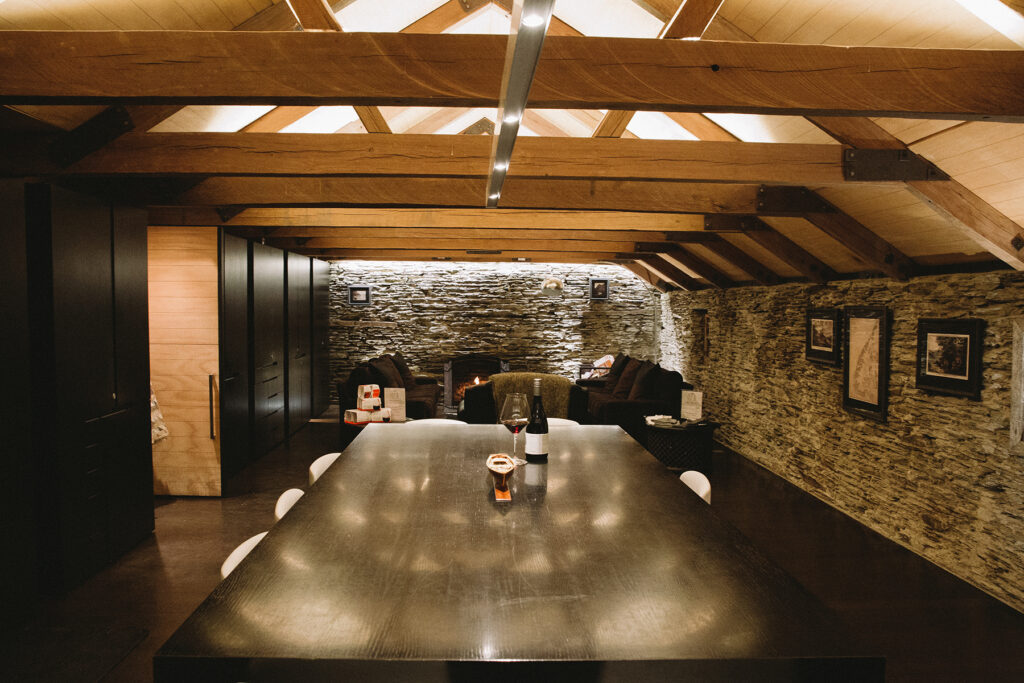
Wine Folio: It reminds me of Steve Smith who is now going back to vineyards that he planted a while back, like the Howell Vineyard, and getting fruit off those for his new ventures.
GH: I’ve known Steve for a long time, and he’s got a very similar idea of going back to those roots. And if you know the style of wine you want to put out, then you think ‘well where do we go to get that?’
WF: And you’ve got the experience, the contacts, to be able to do that.
GH: And that is the opposite to having a piece of land, and planting it, and hoping that the style comes out. You don’t necessarily know what’s going to come out, until you’ve got the fruit, and then you’re four to five years down the track. And you might go ‘well that wasn’t quite what I was thinking’.
About 80% of my sales go out of the Cellar Door here, so full retail margin. And by doing that model you can afford to pay the growers top dollar, for the premium fruit.
And the other model where you go ‘well, I’m going to be small, but I’ll go through a distributor’. They take the margin, so you can’t really afford the premium fruit. It works out pretty good.
Every season is different down here. No two are ever the same. Whenever the rain comes, or the heat comes on, it’s different times. This year’s been no different. Kind of like last year, we had a lot of rain early in the season, but it wasn’t that warm. Whereas this year we’ve had rain early but it has been warm, so things are growing flat out. The timing’s different to getting things done in the vineyard.
Also, I’m really happy with how the venue goes here. It’s got lots of different parts to it. Sometimes you go to a Cellar Door and that’s all there is. The set up is you are either sitting on a couch, chatting; or you’re sitting around the table rather than having a counter. So it’s not as if one person is on one side and you’re on the other. People sit and mingle around the table who don’t know each other. They chat about their holiday or where they’ve stayed and done. I wanted it to feel like walking into someone’s living room.
We’ve got the Deli in here now too on the way in. You might be looking for a snack or going to a friend’s place for dinner. Or, in the last couple of years we’ve had people coming in from overseas who didn’t understand the whole farming concept. So with that wool shed and the old machinery and shearing machines we could explain the farming history of the Wakatipu, which is an important part of how this area developed. This is one of the older buildings in Central Otago, and it kind of suits an older brand, because the Wet Jacket name was given by Captain Cook about 250 years ago.
WF: Can you tell me about that? I’m not sure I quite understand how the Wet Jacket name comes about?
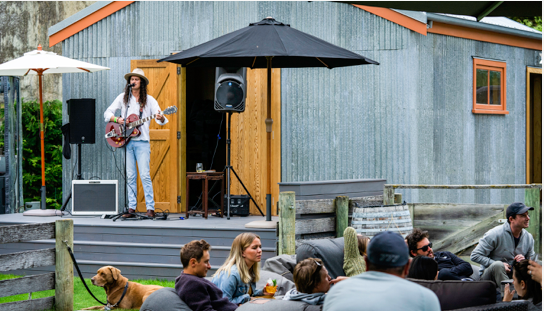
GH: It’s got nothing to do with grape growing and winemaking. It’s a place down in Fiordland. In between two other Sounds – Breaksea and Dusky Sound there’s an arm that goes inland called ‘Wet Jacket Arm’ and that was named by Captain Cook on his second trip to New Zealand in 1773 when he was down there for six weeks on the ‘Resolution’ to get the latitude and longitude of New Zealand.
They did all the mapping of that region because Cook was convinced that Dusky Sound was going to be a hugely important maritime harbour for global trade. Which didn’t transpire of course, as we know. After he went back extolling the virtues of what a great land it was and how it could be easily farmed and had lots of fresh water, climate and wildlife. He thought that we’d need to know how to find it, so spent time doing the celestial sightings to get longitude, as he had the latitude after his first trip. They just named things as they went along – Goose Cove, Supper Cove, Cooper Island…
So it’s nothing to do with wine, but it’s a place where I spend every bit of spare time I have. I’m lucky enough to have friends down there with a boat, who spent all year doing mostly charter work. It’s a name that meant a lot to me. Chard Farm was because it was named after that Chard family historically. Peregrine was because I had an affinity with the native falcon and the Peregrine was on my Hay family crest from Scotland. Wet Jacket Arm is a marine reserve and it’s also the last place that the moose have been seen.
WF: Do you think they’re still there?
GH: I’m not sure. There are a lot of intelligent people who think they are, but you just have to look and I think you’d be expecting to see some sightings – especially with helicopter pilots. They are called ‘The Ghost’ down there because people, even when they were hunting them, would walk past them and they might be 5-10 yards away but never seen them, just the footprints. They are elusive, but there’s helicopters down there been hunting deer for the last forty years and they’ve not seen them. They typically grew quite big antlers which might have suited the forests of Canada, so I doubt it, but never say never. People thought the Takahe was extinct until they found it again.
WF: What are the plans for Wet Jacket?
GH: It’s only four years old as a brand, and I’m really happy with how it sits. We’ve got it into some really good restaurants throughout the country, so we’ve got national coverage. If I wanted to go bigger I’d have to start think about spending more time away. With the other ones I used to spend at last twelve weeks a year overseas, and now I haven’t gone overseas – with work – in the last four years. And I’m really happy about that. I like New Zealand and I’m quite happy pottering around here. I have no intention of getting it to a stage where it goes back to being that big, everywhere kind of model. If I can keep it small and do the majority of it out of here. We want to make wines that are what our clients are expecting.
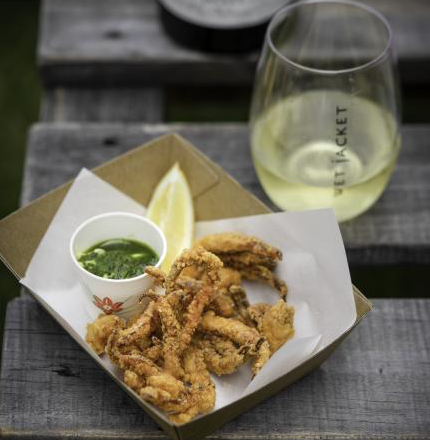
There’s always things where we’re playing around with this as a venue and how that works. It needs to be fun and it’s a unique location. We’re lucky it’s right on the main road and it’s a great spot for getting people in to visit. We’ll try and figure on something to do through the winter months when we can’t do the outside wining and dining experience. We might do something in the woolshed with a small commercial kitchen in there. Keep fine tuning it but nothing that changes too much from the model that I’m really happy with at the moment.
WF: Tell me about the wines?
GH: A lot of them are single vineyard wines off individual vineyards, but I’m not fixated on that as what they have to be. If I see the season changing, then they may not come off any particular block. We’ve got our own style now. I’m not saying I have to make the best wines out of Central Otago year after year. I’m trying to make really good wines that people enjoy. I think if you get fixated on having to get perfection every year then that’s quite an exhausting process. But I’ll never do mediocrity.
WF: I love those quintessential Central Otago Pinots. They almost seem to get forgotten in the desire for ‘single site expression’ Don’t get me wrong, I appreciate those as well, but there’s something about a wine that just ‘sums up’ Central Otago. Carrick, Rockburn, Akarua, Peregrine… those classic wines!
GH: Interesting with two of those wines. With Peregrine I got the vineyards planted for that reason. It was about twelve vineyards sites from across the area but I had them to make a certain style of wine. And the Rockburn vineyards I planted those as well, and did their viticulture in the early days. With the same reason, because I thought this is what represents the quintessential Central Otago wines. Rockburn is another of those reliable brands. You know what you’re going to get year in, year out. It doesn’t waver too much from its ‘style’ and that’s what I’m trying to do here as well. That consistency is something to aim for – and take out the big fluctuations. A $40 Pinot is a bit of an investment for some people, so they want to have some idea of what’s in that bottle, rather than to discover ‘that wasn’t what I was thinking’.
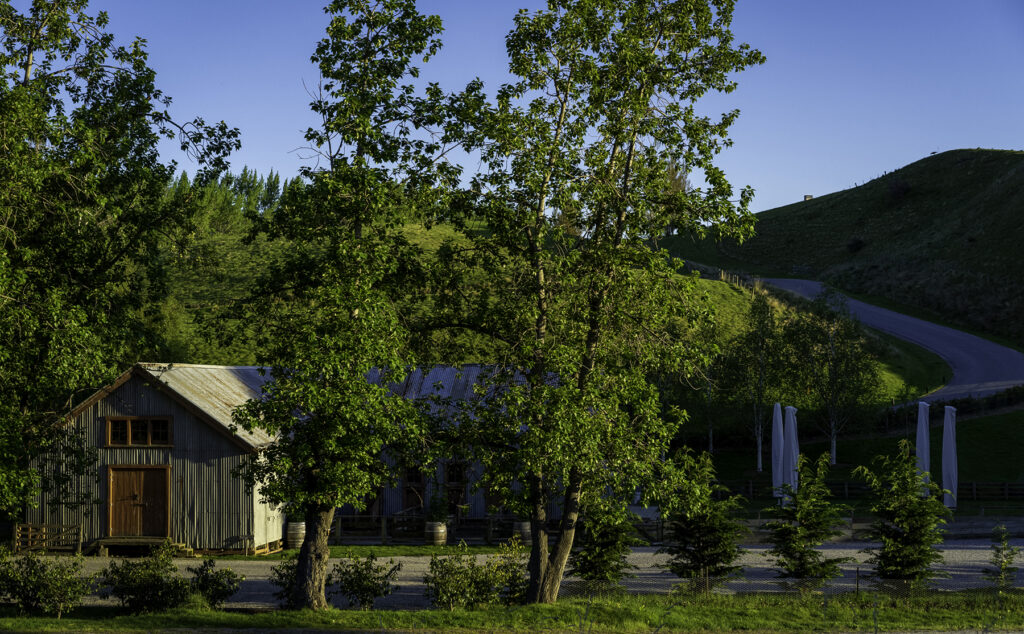
WF: So were you involved with Bendigo quite early on then? I find that a fascinating story.
GH: Yep. I planted some big blocks over there. One that went under the Aurora label – that was one of the first ones in there. The only others that were in there I think at that stage were Quartz Reef and Gibbston Valley. Planted lots in Lowburn, and in Felton Road, for the Olssens – that was the second vineyard to get planted in Felton Road.
WF: I had a 2002 vintage Pinot Gris from Rockburn that I was told was made by Rudi Bauer. It was excellent – drank it last year.
GH: I think Pinot Gris goes through a bit of a wave. I think they’re good for about three years and then they into a grey area, but if you actually want to hang on to them they go into a… well they may not taste like the Pinot Gris that’s a fresh and vibrant fruit bomb… but they’re some smart wines with a bit of age on them. We’re still a young region and we’re just finding out what happens to the wines with age.
WF: One of the reasons I’m interested in wine as well as Tourism, is that I think we’re going through a really intriguing patch with wine at the moment. You can point at vineyard age and the market developing and coming of age, but I also believe that you can’t go past the experience angle of the people involved. There’s a golden section of people who are very much at the top of their game just now.
GH: There’s still a lot of learning that goes on, but I also think we’re more relaxed about the outcome now. Because it’s got credibility. In the early days it was like “well I hope this works”. And in terms of relaxing, there’s letting the sub-regions speak for themselves as well. Rather than put your stamp on it and say ‘this is what it needs to look like’. The sub-regions – probably more so domestically rather than having to explain to people overseas about the whole New Zealand story, without them knowing Central Otago or the regionality aspect of it. I think there will be a market though who take that on board and want to find out and understand it more.
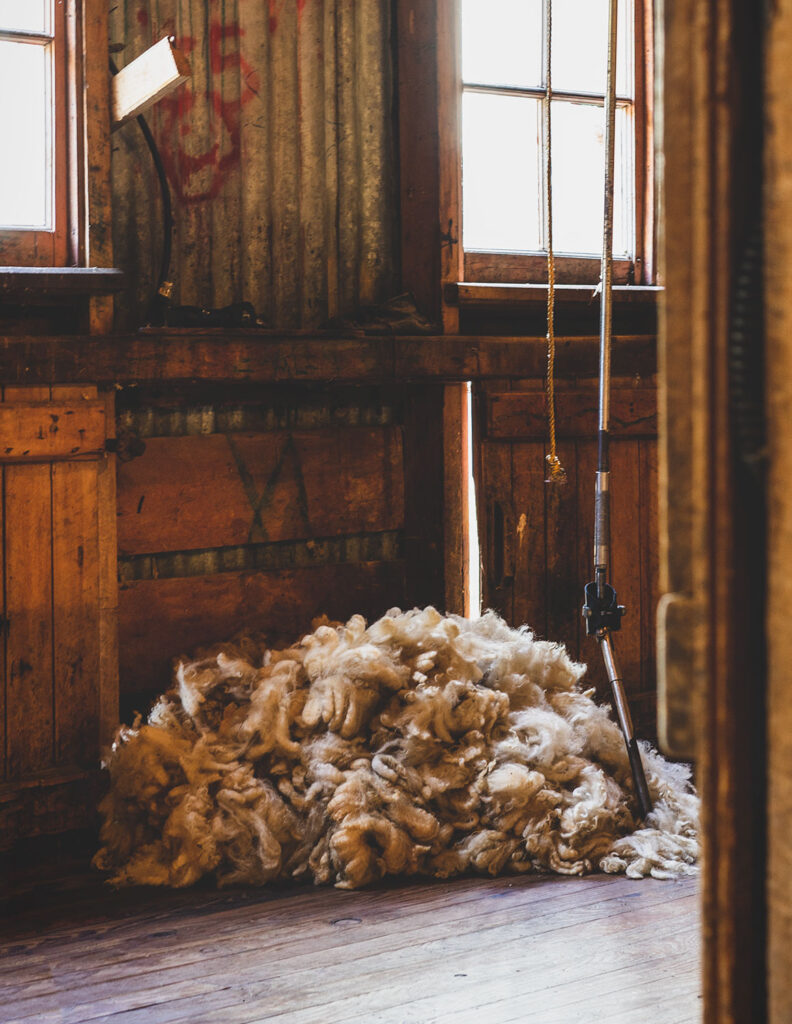
In terms of somewhere like Wairarapa for example – they had a ten year jump on us. We didn’t understand anything about clones or what would work, and they were already starting to put out some quite good wines at that stage, in the late ‘80s. But we are blessed to have this geography that we can also make wines in. People tend to come down here and go away having had a fantastic time. Whether they’re down here for the wines or skiing, jet boating or whatever. We started off small which was a benefit. There was probably only five of us down here in the late ‘80s, and we kind of set some ground rules about about what we needed to do. Which was to promote the region, not yourself over someone else. It’s about Central Otago, and we went flat out trying to help each other.
And as more people came on board that was kind of the motto, and it was a really unified group. We marketed the brand of Central Otago Wine to get it established.
WF: What do you think of organic and biodynamic? Is that another thing that’s important to Central, and New Zealand?
GH: I think there’s definitely a move towards that down here, and of all the regions, it’s probably an easier regions to do it. It’s a climatic thing. If you look at James and Annie Millton who’ve been doing it the longest – and they’re probably in one of the harder regions, in Gisborne. If they can do it, there’s no excuse not to have a go.
People need to make sure that it’s commercial for them, and sustainable. Some people take a bit longer than others to convert. No one’s going to put a flag in the sand and say “I’m biodynamic, but I’ve got this disease in my vineyard that’s going to put me under”. That’s not going to work. There are several vineyards and brands down here that are doing it.
WF: It’s also interesting to see something like Burn Cottage where the whole intention, before they broke ground, was organic. Rather than people having to convert, that’s planned from the get-go.
GH: I remember the viticulturist we had after I left and did more of the Marketing side at Peregrine. We got a guy in who’d been at Felton Road, and he’d never done anything but organics or biodynamics as a viticulturist. He’d never used sprays or chemicals. And he’s now with Steve Smith over at Lowburn Ferry.
WF: But also, the wine’s got to be good. Rule No.1 for me is always – Delicious.
GH: Correct. You’ve got to keep an eye on the market and make sure you are in step with your customers and what they are looking for.
WF: I noticed you do Gewurz. Do people still buy that?
GH: Yes, I was quite surprised. I thought I’d just do a small amount because I quite like it. But we’ve probably gone five-fold on what we made at first, and we still sell out. Not many restaurants are after Gewurztraminer because it takes up a spot on their list. So as a winery you’d probably rather have the Chardonnay, Pinot Gris, Rose or Pinot Noir for volume sales. We’ve got several restaurants who do actually take the Gewurz, but it’s a wine that here – once you talk to people and explain the flavour profile and what you eat it with. The story behind the name and how to say it… once we did that sales just sky-rocketed. 95% of it is sold out of there, and we sell out each year. If you had it on a shelf in a bottle store it’s probably a hard sell.
WF: I was in a bottle shop – a reasonable sized one – and I asked where his Gewurztraminer was, and he showed me over to the one, single bottle! But I’d put it into that ‘bit hard’ basket… and with options like rosé everywhere now – people are just going to opt for that. Rosé just lightens the mood, brightens the table.
GH: It’s like having a lemon wedge beside your whitebait pattie – “ooh that looks interesting.. that’ll be much better!” We sell out of the rosé as well. I like our rosé – I’ll get you a glass.
WF: What do you think is the next thing that the world is going to discover from New Zealand?
GH: I think there’s still a lot of work to get the American market to understand New Zealand Pinot Noir. They’re quite parochial about where things come from. Pinot Noir either comes from Burgundy or Oregon, maybe a little bit from California. It will help that you’ve got some of the large companies now, like Brancotts and Kim Crawfords. A lot of them will now piggy back either Central or Marlborough Pinots in behind that brand, so people try them for the first time who might never have looked at them before.
WF: I think the people in Marlborough who are taking Pinot seriously are doing really, really good stuff.
GH: It’s knowing where to plant it. And also, from a winemaking point of view, you had Sauvignon Blanc winemakers – and that was their passion – and you asked them to do a Pinot Noir which is a very different beast. The people who came down here to make Pinot were not Sauvignon Blanc winemakers. They were passionate about Pinot Noir so that was their focus and they launched into that. They learnt at a rapid rate how to look after that grape variety.
WF: What about bubbles? Do you think that sometime in the future that people could look at New Zealand Sparkling wine as being as good as from anywhere else?
GH: They’re looking at English Sparkling wine in the same vein, so why not?
WF: Imagine that 20 years ago!? You’d be laughed out the room.
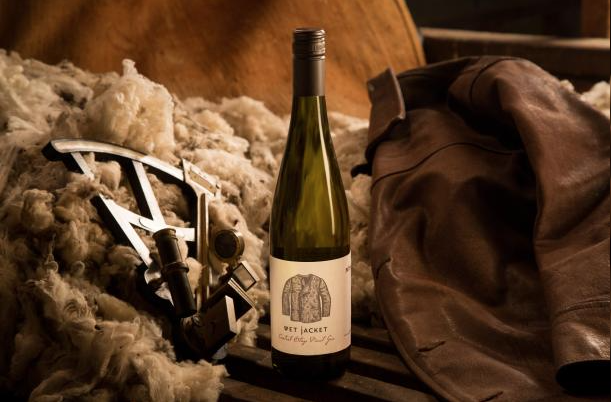
GH: Totally, but that’s not a bad thing either because people are over on the continent, so that kind of stuff, they start looking at things that aren’t coming out of Champagne. Our sparklings are extremely good. There’s a small amount of people who are also looking for Rieslings. I know it’s not a big market but I think New Zealand is making some outstanding Rieslings.
WF: But globally it’s Ok. We’ve got to start to realise that our less than 1% has to make a mark somewhere. I’ve heard a few people say ‘Chardonnay’.
GH: If Global warming takes off then those regions which are making sparkling now, will lose their advantage because it only takes a couple of degrees. All of a sudden the acid levels start dropping and the sugar levels change. Because we’re surrounded by water, we’ve got a much different climate to try and change.
Hawke’s Bay are doing some pretty good stuff like Syrah. But you’ve got get past people’s mindset that we’re not doing what Australia does.
WF: See, I’m really interested in that. Some of the New Zealand ones are light, delicate, beautiful, perfumed wines. And yet, you talk to an Aussie, and the big, black, brooding shiraz they make – is the absolute pinnacle of what Syrah could – and should be. They’re absolutely convinced that they make the best Syrah in the world. “Why make your little, floral, light stuff, when you could make this!” So everyone has a different opinion.
Is there anything else you’d be interested in having trying?
GH: Well, looking outside the wine industry, there’s a couple of things I’d like to have a go at. Just to push the brain buttons into a different direction again. I like learning things. I’d like to have a go at growing lemons and limes in an area that’s not thought of growing them. A bit like planting grapes down here in Central Otago thirty years ago. You can change people’s perceptions.
Also, going back to the land. I had a long term vision of being totally self sufficient on a piece of land. Still keep things ticking along.
WF: You’re a grower, at heart?
GH: I love veggie gardens and things like that. Growing things. I went through a phase of flying. Got my helicopter license about 25 years ago and I wouldn’t mind getting back into that. Not on a commercial basis but just for the enjoyment. I don’t think I have any more ‘challenges’ in this industry, after thirty years. I’ve been extremely lucky to be in a patch from pioneering to being here for the long-term. Now we’re one of the great wine regions globally.
WF: have you got family to pass this on to? Is it a legacy thing?
GH: My brother Rob has still got Chard Farm. I sort of fell into this. I didn’t get into it because I was passionate about wine. I just got into it and thought ‘well let’s have a go and see if this works’ and it was seat-of-the-pants and no consultants.
It was four other producers who all had other day jobs…Rippon, Gibbston Valley, Black Ridge and Anne Pinkney. We knew very little about it and when Rob and I got into it, I think we planted two acres. That doubled Central Otago’s plantings! Youth and bravado got us through. We had no idea what we were doing.
There are three places between Arrowtown and Queenstown, on that loop, that are all wineries. Amisfield, Akarua and me. They do very good versions of what they’re doing, and this is very different and I needed it to be. You often see people here for four or five hours, chatting. They come at midday with their kids, and are still here at 6 o’clock. Coming from a big family that feels quite comfortable. I didn’t want it to be formal or stuffy. It’s about making people feel welcome.

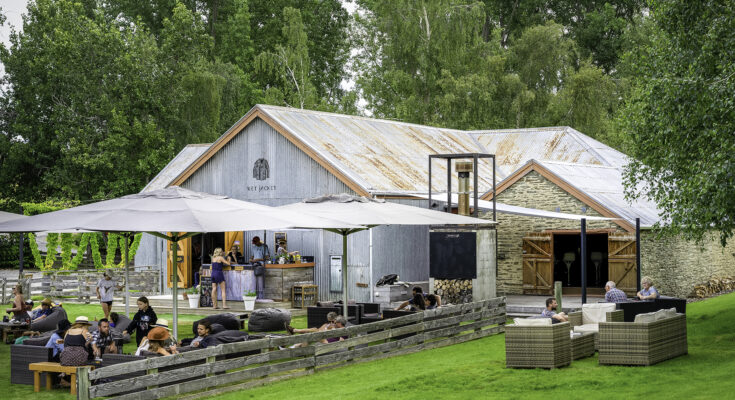
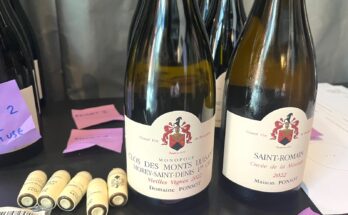
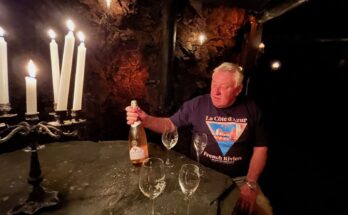
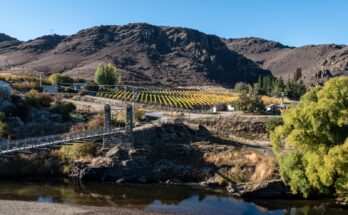
One Comment on “Wet Jacket Wines, Central Otago”